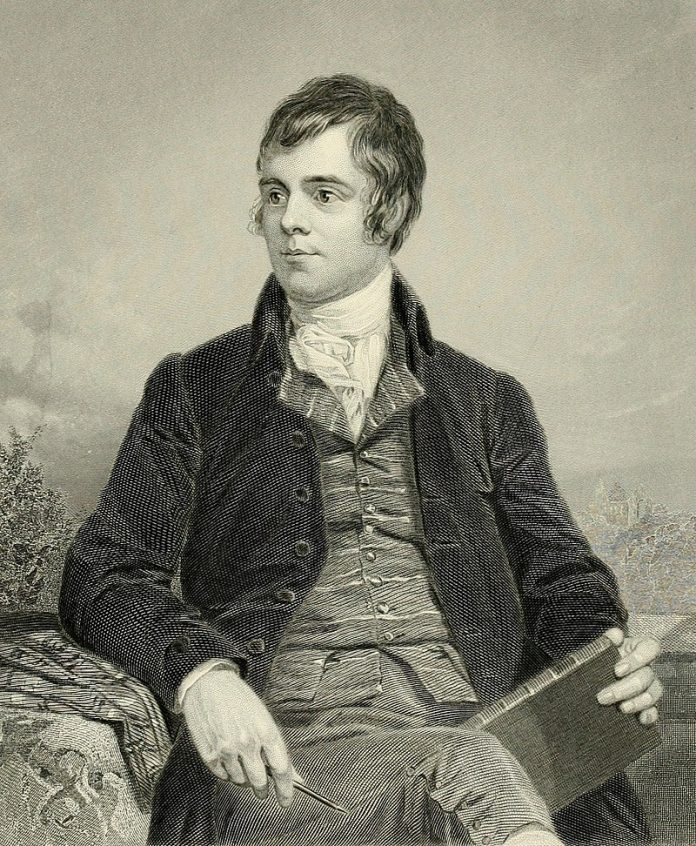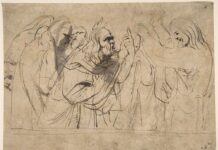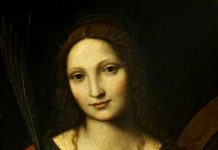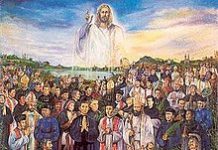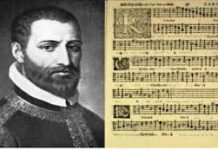A very blessed Solemnity of Mary, Mother of God – of which more, anon – as well as New Year’s Eve, the latter much more celebrated in our culture than the former, even if, to a Catholic mind, we should rejoice in both, together.
Speaking of rejoicing, one gains a plenary indulgence for reciting (or, better yet, singing) the celebratory hymn Te Deum on this eve. The hymn dates back at least to 387, and the era of Saint Ambrose, great hymnographer and compiler that he was, but likely goes back much further than that. It is sung in the Divine Office on Sundays (except in Lent) and on Solemnities – and, New Year’s Eve.
So, to help you along, here is the traditional Chant version:
And, amongst many other versions, here is one by Marie-Antoine Charpentier (+1704), one of the most prolific composers in all history (he wrote more than 800 pieces, at least 500 of which survive – the great J.S. Bach did just beat him, at 1128 works). Charpentier composed in just about every type of musical setting, but all of them religiously themed. His Te Deum is one of his most famous, and you may recognize his prelude from many wedding processions:
Of course, the music most connected with these evening is the musical setting of the 1788 poem by Rabbie Burns, Auld Lang Syne. Here is a historical and musical survey of this uber-popular Scotch ballad by Mark Steyn – made famous by Canada’s own in instrumental form Guy Lombardo – and a version of the song, here:
And a beloved version by Dougie MacLean, with all the words of Burns’ poem:

